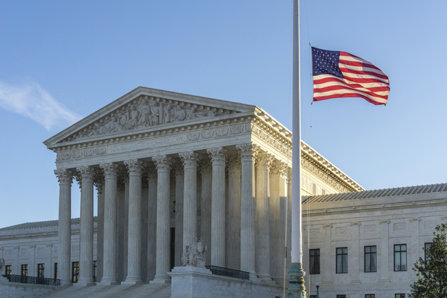Slow Progress in Fighting The Addiction Epidemic

After working with hundreds of people who struggled with addiction over the last eight years, I’ve often wondered if our country’s drug problem has an end in sight. I’ve seen addiction in my fellow man in one form or another all my life. It was an issue in my parent’s generation before me, and even the generation before them. Will it ever end? Or at the very least, will we ever experience a future where drug and alcohol addiction is not as prominent as it is today? Will it recede from the national public health emergency that it has become?
Read enough research papers, subscribe to the New York Times, and listen to talk radio and my view is you’ll get everything bad about our country’s drug problem. And yes, there is a lot about it that is very bad. But there is some good news too. There are some glimmers of hope and some good stories coming out of different regions. You just have to know where to look.
Opioid Prescribing Is Receding
One silver lining that makes us think the drug problem might not be a permanent fixture is the fact that opioid pain reliever prescribing is receding in some areas. You might wonder, “What does that have to do with anything?” It was excessive opioid prescribing that tipped the scales and which helped create the opioid epidemic in the first place. Were opioids always a problem? Sure. But were they a problem on the vast scale that they are now? Definitely not.
So to hear that some doctors, although definitely not all doctors (see this CDC publication), are finally reducing opioid prescribing is good news. That has, of course, led to the problem of opioid addicts looking for different ways to get high. But the fact remains that if doctors prescribe opioids less often and to fewer patients, fewer people will be exposed to them, and fewer people will become addicted to them as a result.
Pharma Companies Are Being Exposed

Another glimpse of good news is the fact that some pharmaceutical companies are being exposed for pushing opioids on doctors, for bribing doctors and encouraging medical experts in any way possible to prescribe more and more drugs, even if patients didn’t really need them. The most recent case is that of Purdue Pharmaceuticals coming under one of the most severe pharmaceutical lawsuits in history for sending large orders of opioids to various regions of the nation. The company's executives knew full well that their opioid drugs would turn patients into addicts. Then Purdue sold naloxone and buprenorphine which are medications used to reverse opioid overdoses (naloxone) and curb opioid withdrawals (buprenorphine).
Thus Purdue was using one drug to make people into addicts, and another to reverse their overdoses, and yet another to help them with “medication-assisted treatment.” Purdue is not the only drug company that has gotten involved in such malicious and unethical practices, but it’s the big one in the headlines right now. The website 100 Days in Appalachia has a good story on the subject.
Drug Overdose Deaths Are Dropping in Some Regions
Another piece of good news is that, even though the total number of people who have died from drug overdoses every year has steadily increased since the late 1990s, some regions are experiencing a reduction in their annual death tolls. In fact, the Centers for Disease Control and Prevention reported that from March 2017 to March 2018, drug overdose deaths declined by 2.8 percent. The decline is very slight, barely there on the CDC’s graph—but it is there.
Could this be a sign that the drug problem has finally peaked? Could reductions in opioid prescribing, the incidences of pharmaceutical companies getting in serious legal trouble, combined with a slight dip in overdose deaths be the first glimpses that the drug epidemic has finally leveled out?
We cannot say for sure, one way or the other. What we can do is continue to work very hard to address the drug problem with the goal of bringing this crisis to a zero.
What Will It Take to Reduce the Drug Problem Significantly?
Seeing stories such as the above are encouraging, but we can’t assume that the drug problem is on its way out now and we can all take a break. That would be extremely foolish.
Here’s a list of activities/areas that we need to work on to continue to push the drug crisis out of our lives, homes, communities, states, and nation:

- Addicts need better access to residential treatment. In spite of the earlier good news, the treatment gap in this country is unacceptable. According to former Surgeon General, Dr. Vivek Murthy, “Alcohol and drug addiction take an enormous toll on individuals, families, and communities. Most Americans know someone who has been touched by an alcohol or a drug use disorder. Yet 90 percent of people with a substance use disorder are not getting treatment. That has to change.”
- Drugs need to remain illegal. This is a highly controversial issue. But the logic is that if drugs are legal, more people will use them. The two most commonly used drugs in America, alcohol and tobacco, are entirely legal. If drugs become legal, more people will use them. We can’t allow that to happen.
- We need to do away with “quick fix” ideology. As difficult as it can be to address the drug problem, it’s easy to come up with a quick fix approach to addressing addiction. Using naloxone to save lives from overdoses, but not then treating the addict through rehab, is a quick fix solution. Using buprenorphine and methadone in Medication-Assisted Therapy when what the person really needs is residential care and a clear map out of all drug use is another. Using opioid painkillers to medicate pain patients rather than actually finding out what is really causing patients pain and working to address those issues at the source is a quick fix approach. Deciding that addiction is a lifelong disease, and no one can ever get better, so one might as well just cope is not even a solution at all. These are quick fixes and, like other quick fixes in life, they simply don’t get the job done.
- Drug education is a must. We have to get people educated about drugs—especially young people. When people know what is at risk, and they know the danger attendant with drugs and alcohol, they become far less likely to experiment with such substances. If they know the truth about drugs they will not so easily succumb to peer pressure.
- Help get someone who is addicted into rehab. The family members and loved ones of addicts are an addict’s best lifeline, most capable safety net. These are the people most likely to help an addict find his or her way out of their habit and into a qualified treatment center. If you know someone who struggles with drugs or alcohol, do your best to help them.
We’re trying to create a sober society, but no one said that was going to be an easy thing to do. And it is not going to be easy. But if we all do our part, if we all work together to help those in our lives who are harmed by addiction, we can help people get off of drugs and alcohol and reduce this problem significantly.
Sources:
- https://www.cdc.gov/mmwr/volumes/66/wr/mm6626a4.htm
- https://www.100daysinappalachia.com/2019/03/14/purdue-pharma-taps-a-gilded-age-history-of-pharmaceutical-fraud/
- https://www.cdc.gov/nchs/nvss/vsrr/drug-overdose-data.htm
- https://www.aafp.org/news/health-of-the-public/20161122sgreportdrugs.html
Reviewed and Edited by Claire Pinelli, ICAADC, CCS, LADC, RAS, MCAP


 ®
®